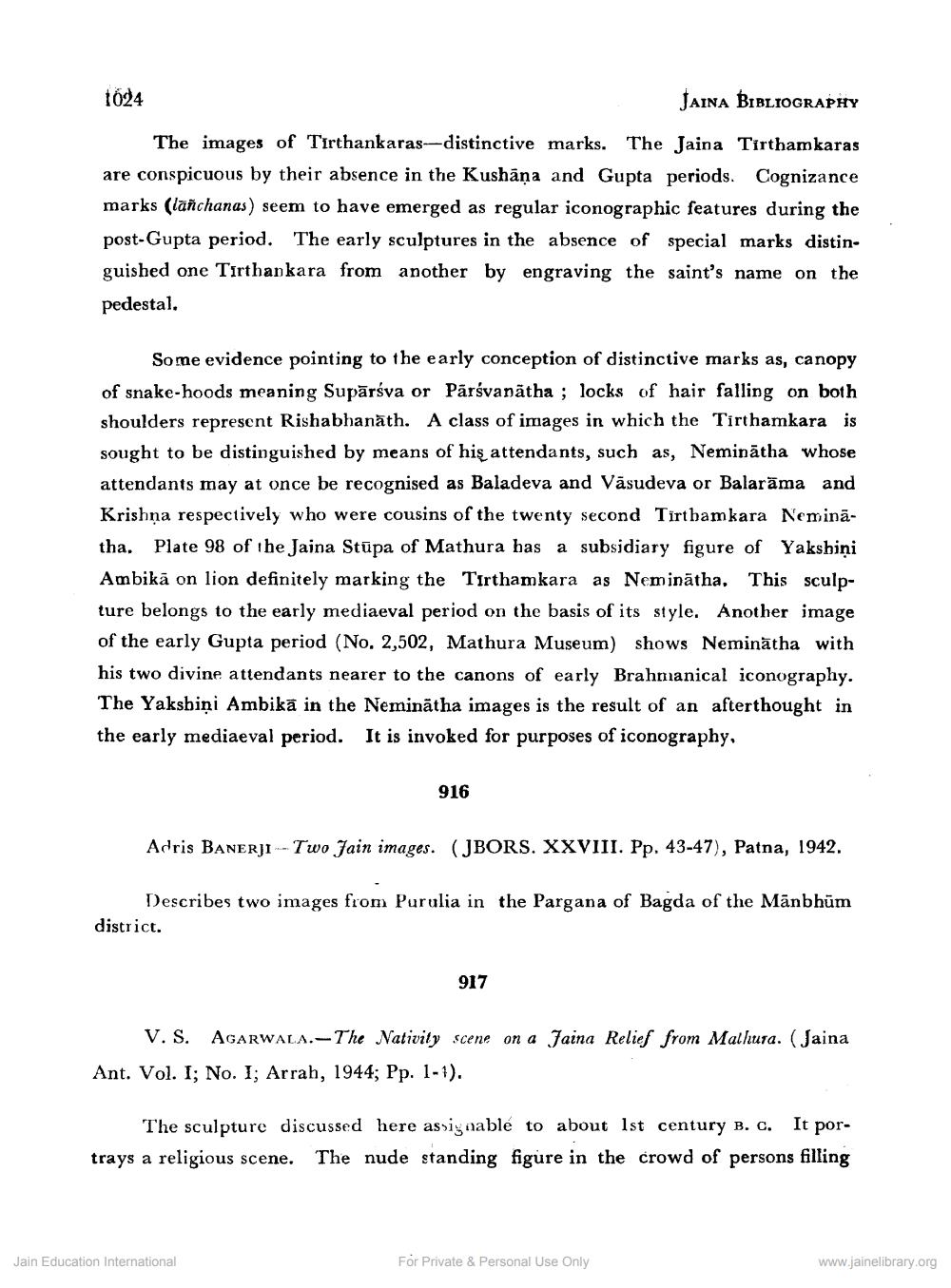________________
1024
JAINA BIBLIOGRAPHY The images of Tirthankaras--distinctive marks. The Jaina Tirthamkaras are conspicuous by their absence in the Kushāņa and Gupta periods. Cognizance marks (lañchanas) seem to have emerged as regular iconographic features during the post-Gupta period. The early sculptures in the absence of special marks distinguished one Tirthankara from another by engraving the saint's name on the pedestal.
Some evidence pointing to the early conception of distinctive marks as, canopy of snake-hoods meaning Supārśva or Pārsvanātha ; locks of hair falling on both shoulders represent Rishabhanāth. A class of images in which the Tirthamkara is sought to be distinguished by means of his attendants, such as, Neminātha whose attendants may at once be recognised as Baladeva and Väsudeva or Balaräma and Krishna respectively who were cousins of the twenty second Tirthamkara Neminātha. Plate 98 of the Jaina Stūpa of Mathura has a subsidiary figure of Yakshiņi Ambikā on lion definitely marking the Tirthamkara as Neminātha. This sculpture belongs to the early mediaeval period on the basis of its style. Another image of the early Gupta period (No. 2,502, Mathura Museum) shows Neminātha with his two divine attendants nearer to the canons of early Brahmanical iconography. The Yakshiņi Ambikā in the Neminātha images is the result of an afterthought in the early mediaeval period. It is invoked for purposes of iconography,
916
Adris BANERJI -- Two Jain images. (JBORS. XXVIII. Pp. 43-47), Patna, 1942.
Describes two images from Purulia in the Pargana of Bagda of the Mānbhūm district.
917
V. S. AGARWALA.-The Nativity scene on a Jaina Relief from Malhura. (Jaina Ant. Vol. I; No. I; Arrah, 1944; Pp. 1-1).
The sculpture discussed here assignable to about Ist century B. C. It portrays a religious scene. The nude standing figure in the crowd of persons filling
Jain Education International
For Private & Personal Use Only
www.jainelibrary.org




